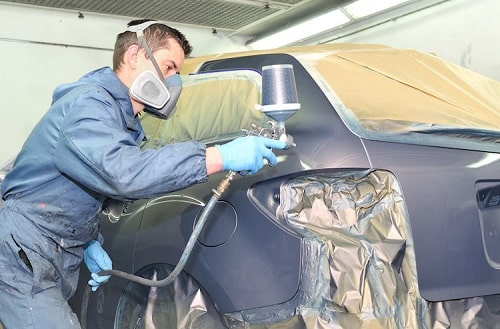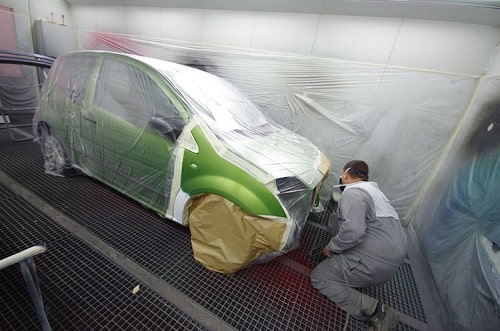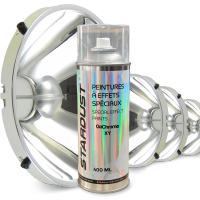All Products are in stock
and shipped from France.
Delivery within 48 hours.
and shipped from France.
Delivery within 48 hours.
Our categories
 How to use paints on your car ?
How to use paints on your car ?
Car paint application requires either a certain amount of know-how and experience, or a meticulous character, good dexterity and of course full compliance with the use and mixture procedures. It is of course also essential, when applying a car paint, to know and follow the safety rules for products, which are harmful or flammable.
If you are not a coachbuilder, it is quite possible to succeed, if you follow instructions to the letter, and especially by practising a little bit the movements that are necessary for spray gun handling. Chosing professional products allows you to avoid unpleasant surprise for the beginner, because many reactions or defects can occur during the different primer, paint, and topcoat application phases.
Application methods used for car paint, motorcycle paint and bike paint
If you use the minimum equipment recommended for painting, you will be able to almost achieve a professional quality paint : the application is done only with a spray gun, as it offers a perfect and homogeneous paint spray on the substrate, without leaving marks.
Technical details : the use of paints is always briefly explained on the pots and labels, but especially on the data sheets. They detail the professional recommendations and instructions. You can also visit our Web sites for methods and application guides. These techniques are defined in what are called the automotive paintinggood practices :
The first rule in car paint application is a good preparation of the substrate : the surface to be painted must be clean and healthy, dusted, dry and properly sanded. The following rules shall be applied: respect the mixture procedures, drying times, spray distances, and coverage times, as well as the coat quantities and thickness.
Tools and accessories
In painting, a number of tools and accessories are needed : compressors, air filters or "air purifier", but also small equipment and consumables, such as protective gloves, mask, goggles, sandpaper, sponges and sticky pads.
Car paint users
The main users of car paints are of course the professional coachbuilders and car manufacturers, whose job it is. Other ordinary or professional users use bodywork paints. They are decorators for motorbikes, for example, or merry-go-rounds, or private individuals who want to repair and make small touch up jobs to their vehicle after a small fender-bender or even try to personalize their vehicle.
 Paint application methods
Paint application methods
Based on existing technologies, the methods used for applying paints are essentially spraying: no paint can be applied by brush. Apart from spray guns, there are other spraying instruments: flakesbuster (to spray flakes), chrome-plating machines, pressure tank spray guns, airbrushes, electric powder coating spray guns, “airless” spray guns.
Painting techniques
They may seem complicated or even gibberish to you, yet it is useful to learn to read correctly through the data sheets: They detail painting techniques, e.g. drying times, air pressure or especially thinning and mixing. To avoid disappointments, and incidentally, to improve your gesture, your knowledge of the products, of the gloss quality or to obtain a suitable drying, take the time to read them.
Safety rules concerning paint application
They are very important for the user as well as for the installations and the environment. Even since the appearance of modern water-based paints, which significantly reduce the risks and hazards, the safety rules concerning paint application and hazards still exist, because we still use products that contain flammable or harmful components (primers, thinners, topcoats, etc.). Compliance with safety rules first requires the use of safety equipment, which protects the user from harmful products. Even with a respirator, it is important to have a good spray booth and appropriate air circulation. Product storage is also part of safety procedures when using flammable products.
What is car paint, motorcycle paint and bike paint ?
Why use a car paint, motorcycle paint and bike paint ?














































































